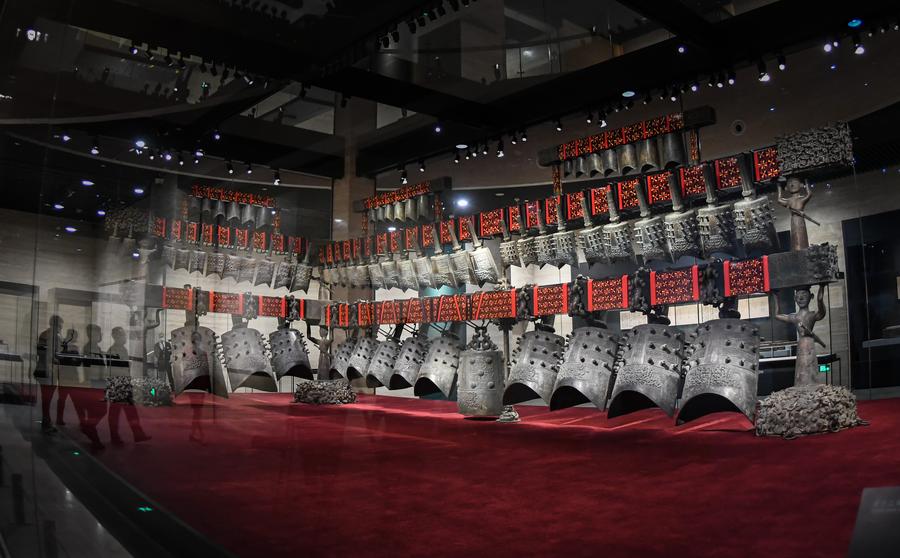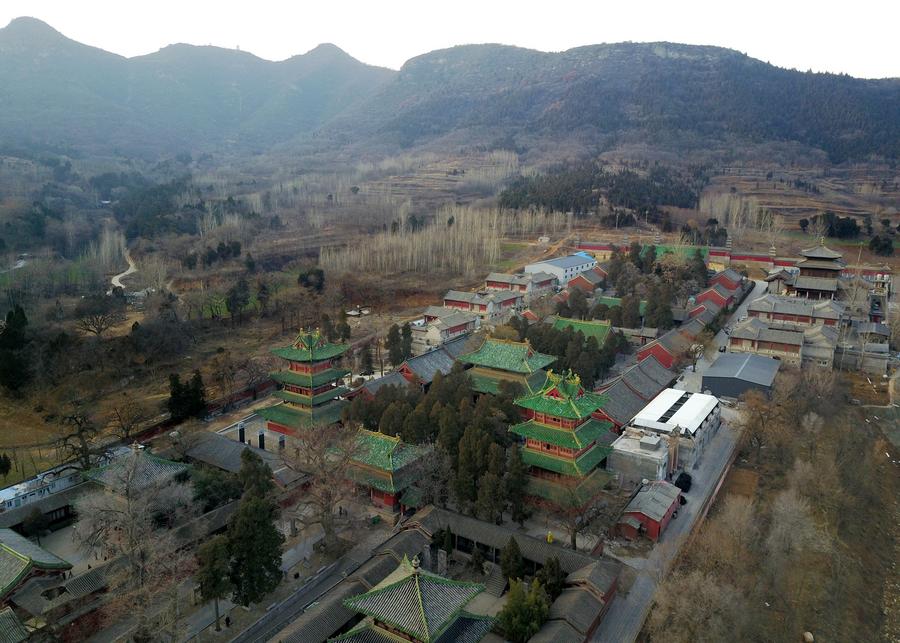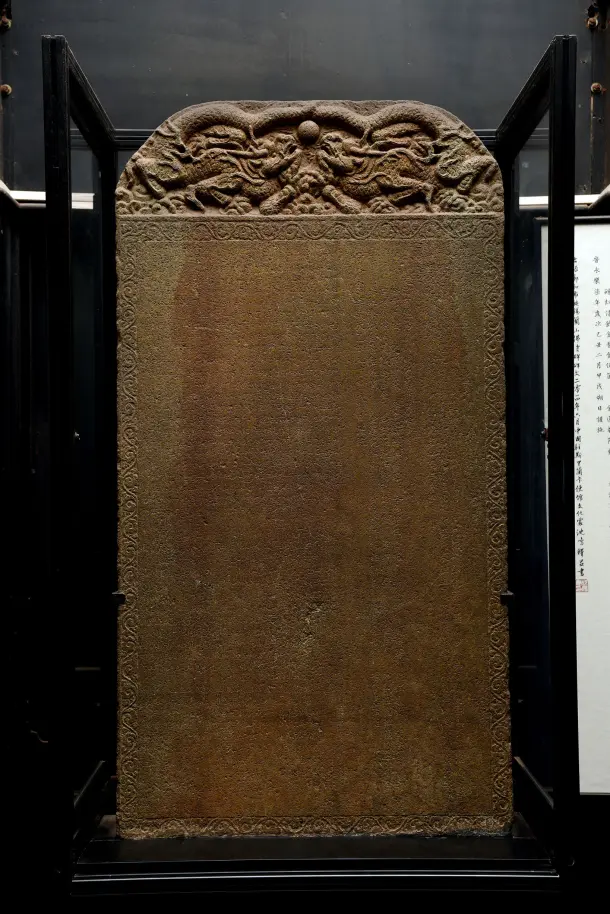


Visitors look at a set of chime bells, the largest ever unearthed in China, which was found in 1978 in the tomb of Marquis Yi, a ruler of the Zeng State during the Zhou Dynasty (1046-256 BC), in Hubei Provincial Museum in Wuhan, central China's Hubei Province, Dec. 20, 2021. (Xinhua/Cheng Min)
Among the 74 new additions, China contributed two solo submissions - the Bianzhong of Marquis Yi of Zeng and the Steles of Shaolin Temple - as well as a joint submission with Sri Lanka: the Trilingual Inscription.
PARIS, April 17 (Xinhua) -- Three documentary heritage collections submitted by China have been inscribed in the UNESCO Memory of the World Register, the United Nations Educational, Scientific and Cultural Organization announced on Thursday.
Among the 74 newly added entries, China contributed two solo submissions - the Bianzhong of Marquis Yi of Zeng and the Steles of Shaolin Temple - as well as a joint submission with Sri Lanka: the Trilingual Inscription.
According to UNESCO, the Bianzhong of Marquis Yi of Zeng is a remarkable set of ancient bronze bells unearthed in 1978 from the Tombs of Marquis Yi in Suizhou city, central China's Hubei Province. These bells not only offer insights into early Chinese musical traditions but also contain inscriptions that are considered the earliest surviving archaeological records illustrating mathematical relationships in music.

Aerial photo taken on Jan. 20, 2017 shows the Kernel Compound of Shaolin Temple in Dengfeng, central China's Henan Province. (Xinhua/Li An)
The Steles of Shaolin Temple (566-1990) contain 499 surviving steles of the iconic temple, presenting a relatively complete and coherent sequence of historical documents in the form of stone inscriptions dating back to 1424.
The third entry, the Trilingual Inscription jointly submitted by China and Sri Lanka, was a stone tablet dated Feb. 15, 1409. The inscription features texts in Chinese, Persian, and Tamil. Installed by Chinese Admiral Zheng He during one of his voyages, the inscription praises Buddha, Vishnu, and Allah. UNESCO describes it as the only known trilingual text combining these three languages and representing three distinct civilizations.
"Documentary heritage is an essential yet fragile element of the Memory of the World. This is why UNESCO invests in safeguarding it, shares best practices, and maintains this register that records the broadest threads of human history," said UNESCO Director-General Audrey Azoulay.
With the latest additions, the Memory of the World Register now comprises 570 collections, encompassing a wide range of subjects including the scientific revolution, women's contribution to history, and major milestones of multilateralism.

The undated photo shows the Trilingual Inscription, a stone tablet with Chinese, Persian and Tamil inscriptions praising Buddha, God Vishnu and Allah. The tablet was discovered in 1911 in Sri Lanka. (UNESCO/Handout via Xinhua)
点击右上角![]() 微信好友
微信好友
 朋友圈
朋友圈

请使用浏览器分享功能进行分享
